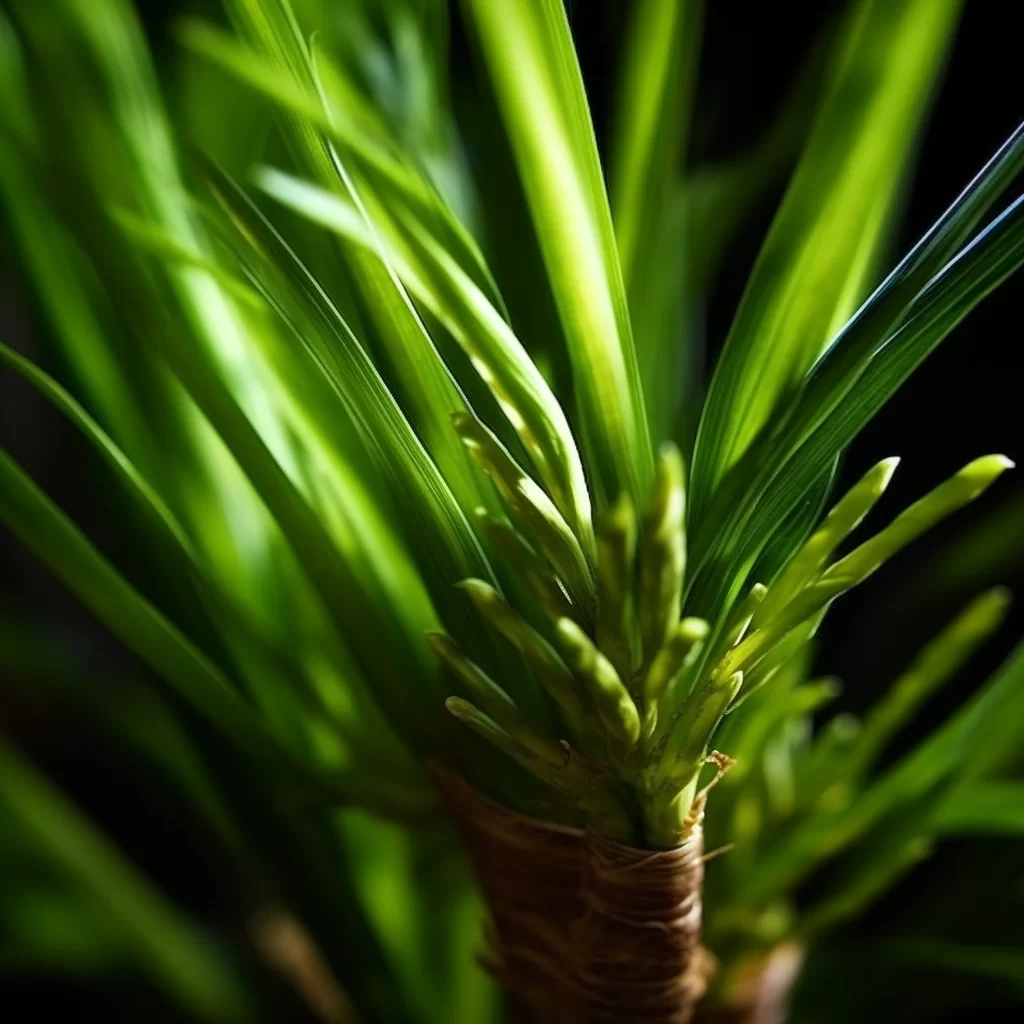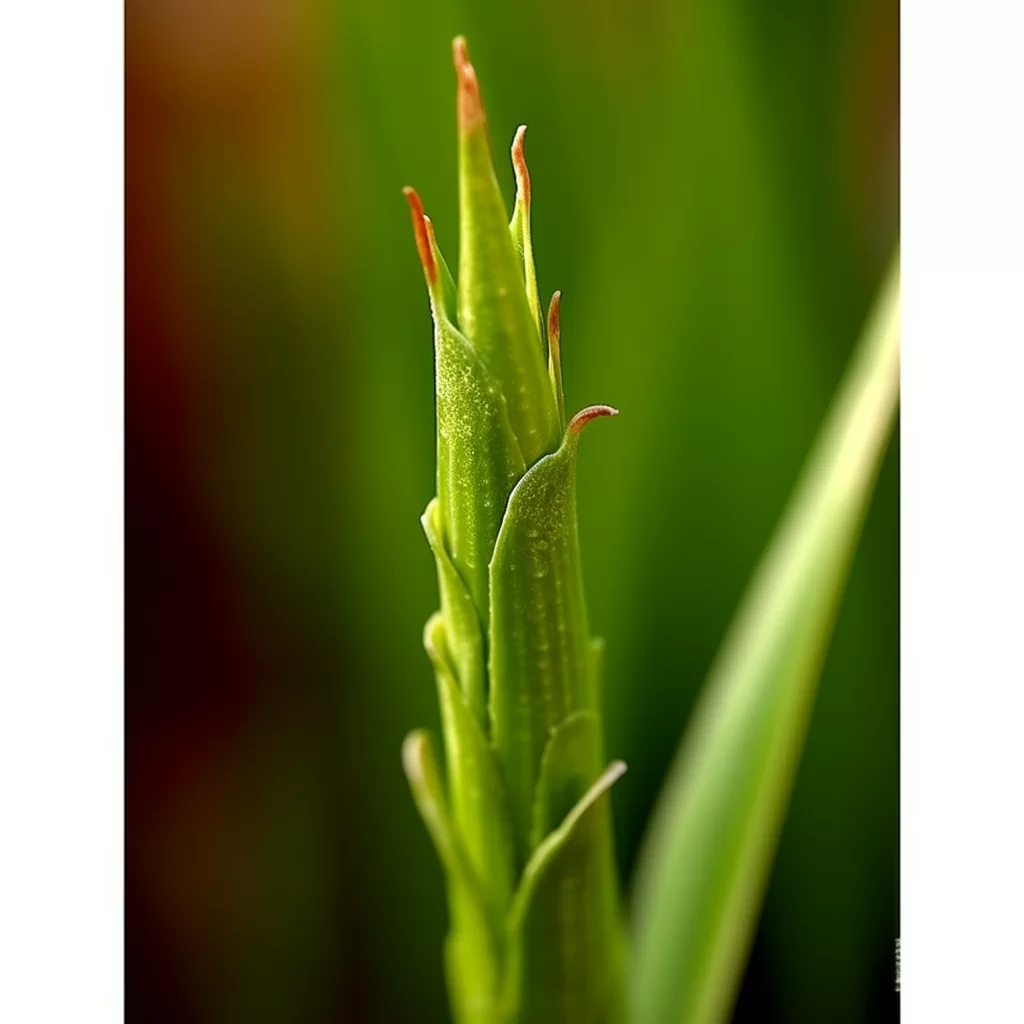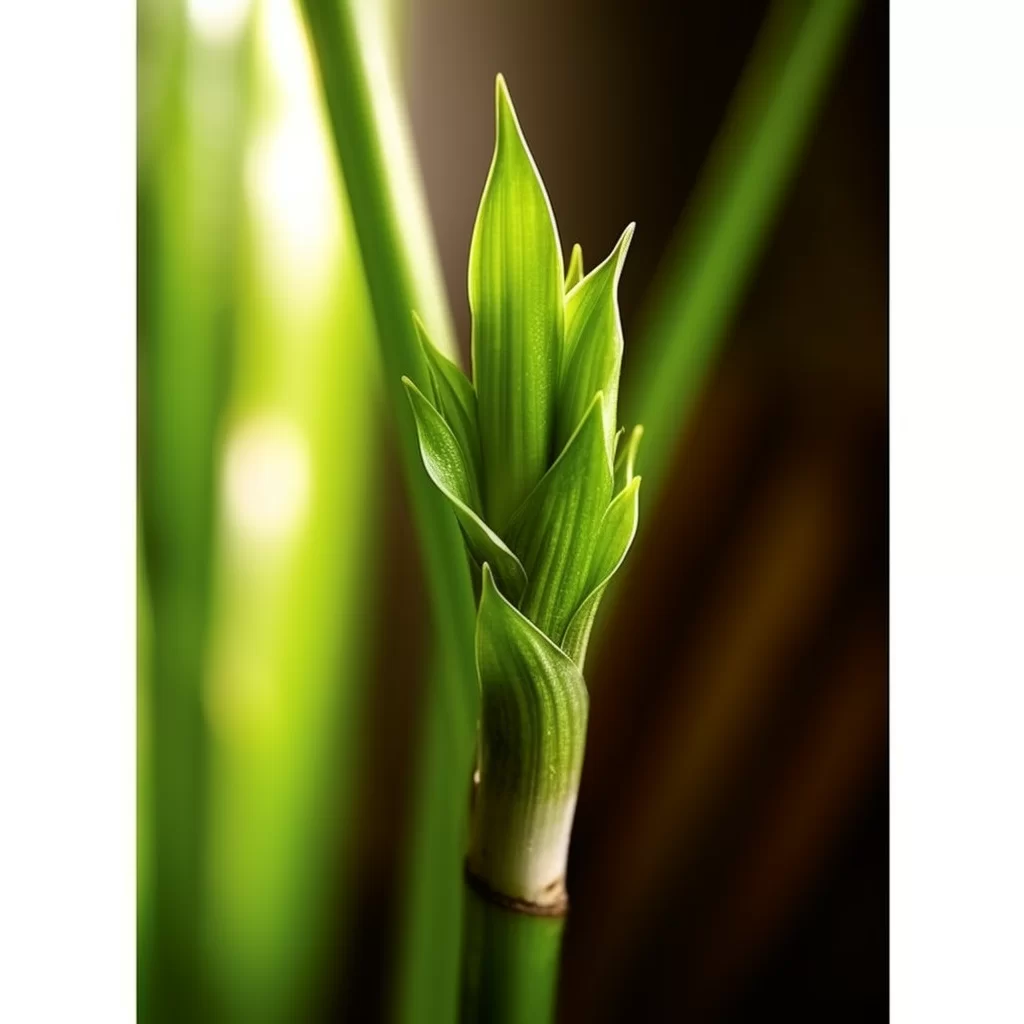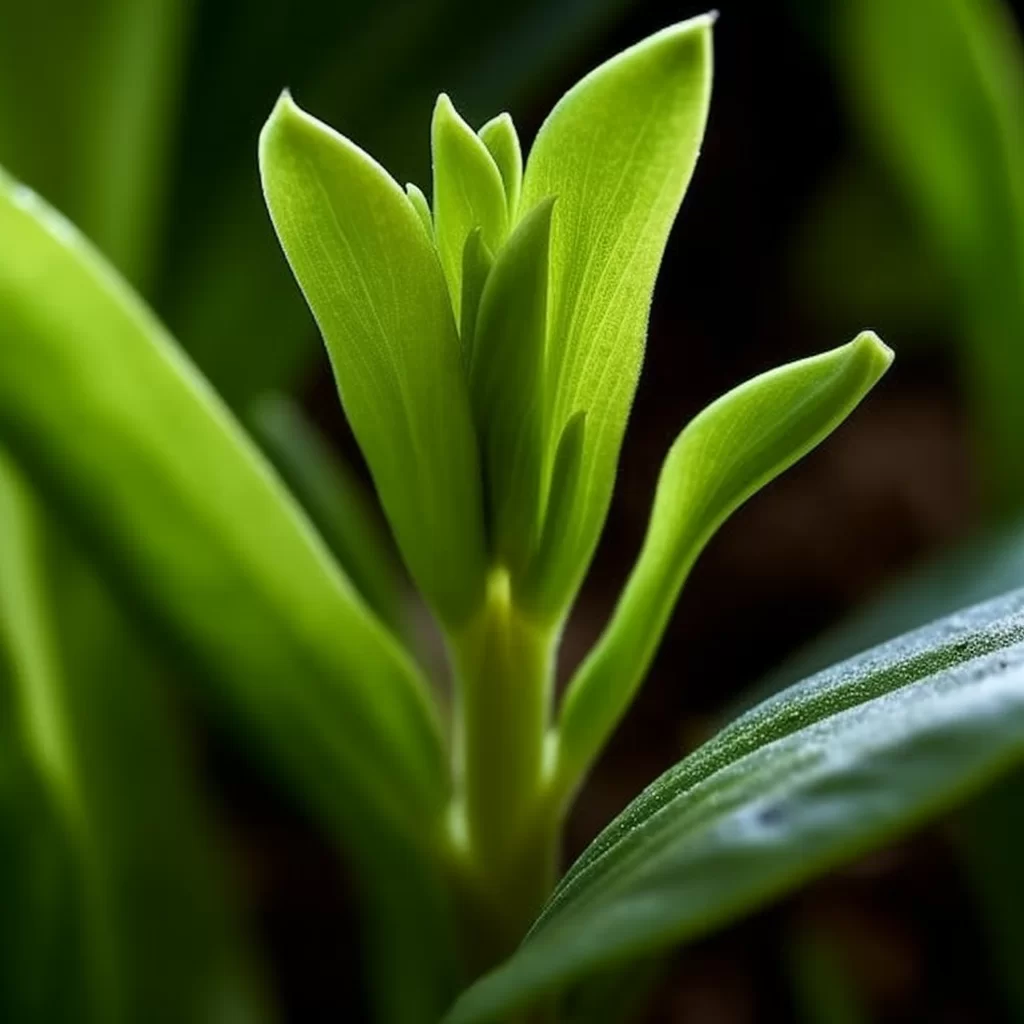Story of Day :
Contents
The Leek Plant: A Complete Guide and Care Tips
Leeks are a type of vegetable that belong to the same family as onions, garlic, and chives.
They have become widely known for their adaptability in cooking, as they can be utilized in various dishes such as stews, soups, salads and quiches.
However, when it comes to growing leeks in your garden or home-grown farmyard; it may be a more difficult task than you might expect! Therefore this article will give you all the essential information you require on how to nurture and care for your own leek plants.Leek plants need special attention for optimal growth conditions; their requirements differ from those of other vegetables.
Learning about the ideal soil composition needed and best planting techniques is vital when cultivating this versatile vegetable.
With our guide on caring for leek plants – from seedling to harvest – you’ll be able to cultivate thriving and healthy leeks with ease!
Planting Leeks
The first step in caring for your leek plants is planting them correctly.
The optimal time for planting is between late February and early April when the soil begins to warm up after winter.
Before planting your leek seeds or seedlings:
- Choose a site with fertile soil that receives full sun or partial shade.
- Add organic matter such as compost or manure to improve soil quality.
- Sow seeds ½ inch deep into modules filled with peat-free compost.
- If using seedlings, plant them at least six inches apart from each other in rows 12 inches apart.

Caring for Leeks Plants
Once your leek plants have taken root and are growing, it’s important to take certain measures to keep them thriving.
One key step is to monitor the soil moisture levels consistently.
Leeks require a consistent supply of water, but at the same time, they don’t like excessive amounts that could lead to rotting or disease.
You should aim for soil that is consistently moist but not too wet.
Additionally, adding some organic fertilizer or compost can help provide the necessary nutrients for healthy growth.Another crucial element in cultivating successful leeks is regular weeding and pest management.
Weeds compete with leeks for nutrients and water, so it’s important to remove them as soon as they appear.
In terms of pests, common threats include onion maggots and thrips which can cause significant damage if left untreated.
There are various organic pest control methods available such as introducing beneficial insects or using natural repellents like garlic or hot pepper sprays that can help protect your leek plants from these invaders without resorting to harmful chemicals that may affect other beneficial organisms in your garden ecosystem.
By following these simple steps throughout the growing season you’ll be sure to enjoy a bountiful harvest of delicious homegrown leeks!
Mulching
Mulching helps keep weeds at bay while retaining moisture around your plants’ roots during warmer months.
You may use pea straw or grass clippings as mulch materials instead of synthetic ones like plastic sheeting that does not enrich the soil naturally.
Watering
You should water your leeks regularly, especially during dry spells.
It is essential to make sure the soil doesn’t dry out, so water them at least once a week, and during hot weather increase it to twice a week.
Feeding
Carefully rotate your crops and then feed your leeks with high-nitrogen fertilizer when they reach six inches tall.
Repeat this process every four weeks until they are mature.
Pests and Diseases
Leeks are relatively resistant to pest infestations and diseases when compared to their Allium counterparts like onions or garlic.
However, slugs can be an issue in wet weather conditions.
- Avoid planting in waterlogged soil where slugs thrive
- Encourage natural predators such as ground beetles by providing shelter rocks or log piles
- You may also use slug pellets but use them sparingly as they can be harmful if ingested by other wildlife species that feed on dead prey like hedgehogs or birds.
Harvesting Leeks Plants

If you are a gardening enthusiast or simply enjoy cooking with fresh produce, you might want to consider growing leeks in your backyard.
Leeks are versatile vegetables that can be used in a variety of recipes, from soups and stews to salads and pasta dishes.
However, timing is crucial when it comes to harvesting your leek plants.
The ideal time for harvesting is between late October and November when the shafts have grown tall enough above the soil surface.
This ensures that the leeks have developed their signature sweet flavor and tender texture.To harvest your leek plants during this period, simply follow these easy steps: first, use a garden fork or spade to loosen the soil around each plant carefully.
Next, grasp the lower part of the shaft firmly with one hand while pulling up on it gently with your other hand until it comes out of the ground completely.
Be sure not to damage any neighboring plants or disturb their roots as you do so.
Once you’ve harvested all of your leek plants successfully, rinse them thoroughly under running water before using them in your favorite recipes for maximum flavor and nutritional benefits!
- Cut off the tops using scissors just above where the leaves turn green from white
- Lift each plant from the soil carefully using a fork with minimum damage done to its roots system as you do not want any dirt left inside while cleaning after which it should be ready for cooking preparation instantly!
- If leaving some in place for later use, cover them with straw over winter protection during harsh cold months ahead of springtime growth spurts again next year!
To sum up, the key points of what has been discussed can be briefly highlighted.
Firstly, it is important to recognize the significance of the topic at hand and how it impacts our daily lives.
Secondly, we have explored different perspectives and ideas related to this issue that offer valuable insights for consideration.
Additionally, we have identified potential solutions or actions that can be taken to address the challenges associated with this topic.
It is important to note that while addressing these issues may not be easy or straightforward, with continued effort and collaboration between various stakeholders we can make progress towards creating a better future. In conclusion, by reviewing what has been discussed in depth on this issue, there are several takeaways worth remembering moving forward.
In conclusion, by reviewing what has been discussed in depth on this issue, there are several takeaways worth remembering moving forward.
We must continue to stay informed about developments relating to the topic at hand in order to make informed decisions and contribute meaningfully towards solutions.
Furthermore, by engaging in open dialogue with individuals from diverse backgrounds and perspectives we can gain a better understanding of how different factors play into this complex issue.
Ultimately though, action is needed if genuine change is going to take place; whether through policy changes or individual actions aimed at reducing our impact on society as a whole.
With everyone working together towards common goals for positive change – there’s no limit on what’s possible!
Are you planning to grow leeks in your garden? While it may not be the easiest crop to cultivate, with a little effort and know-how, you can achieve a successful harvest.
To start with, select a spot that receives plenty of sunlight and good drainage.
Before planting, enrich the soil with organic matter such as compost or well-rotted manure.
After planting the young seedlings, cover them with mulch to conserve moisture and suppress weeds.
Keep up regular watering and feeding every four weeks to ensure vigorous growth.
However, watch out for common problems such as slugs which can damage the leaves or diseases that may stunt their progress.Leeks are a versatile vegetable used in many delicious winter recipes from soups to stews.
But growing them requires attention to detail since they are prone to certain pests and diseases that could harm their development if ignored.
So when choosing your site for planting leeks make sure it is fertile and has good drainage characteristics because waterlogged soil will hinder growth significantly.
It’s also important to prepare your garden bed by adding an ample amount of organic fertilizer before transplanting seedlings so they have enough nutrients throughout their life cycle.With proper care like regular watering and periodic feeding every month along with timely mulching efforts around plants you should enjoy healthy looking crops come harvest time without encountering major issues related slugs or other pests causing harm along the way!